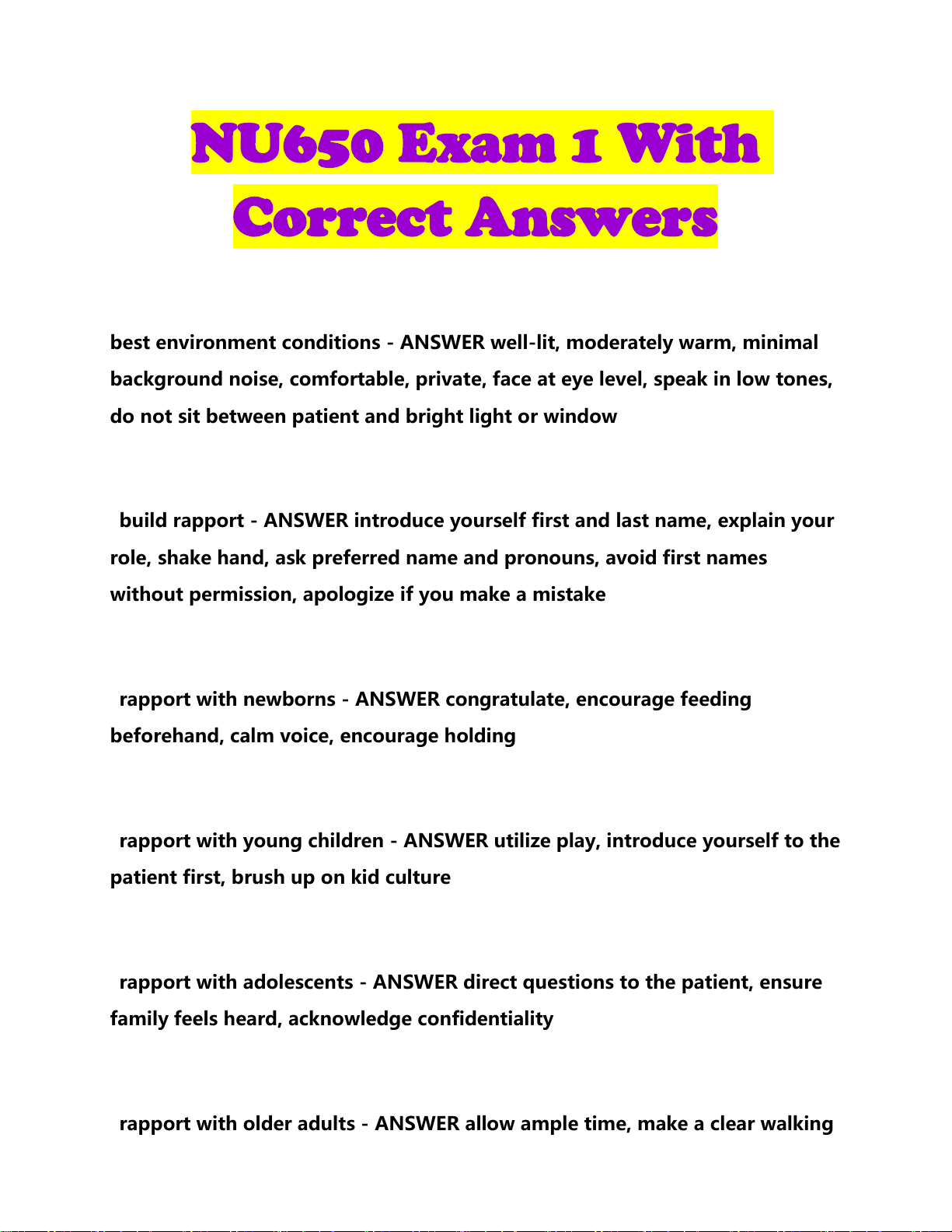
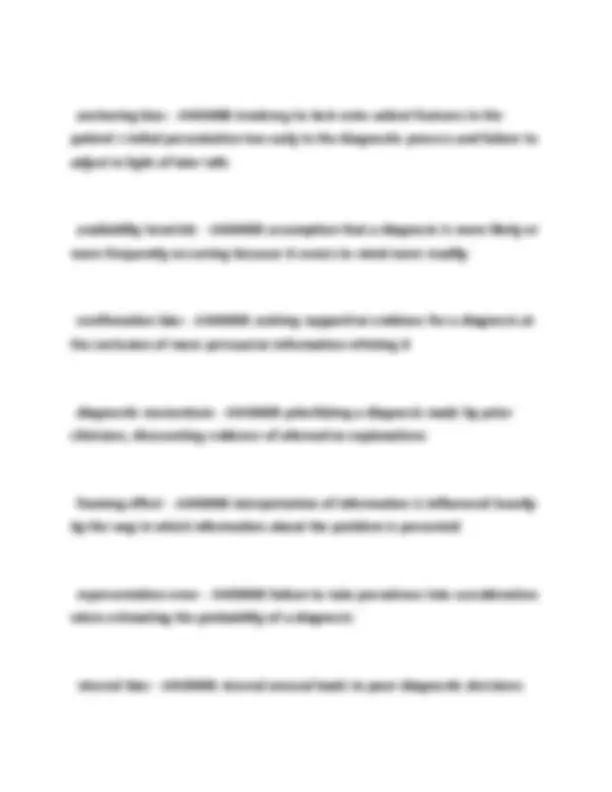
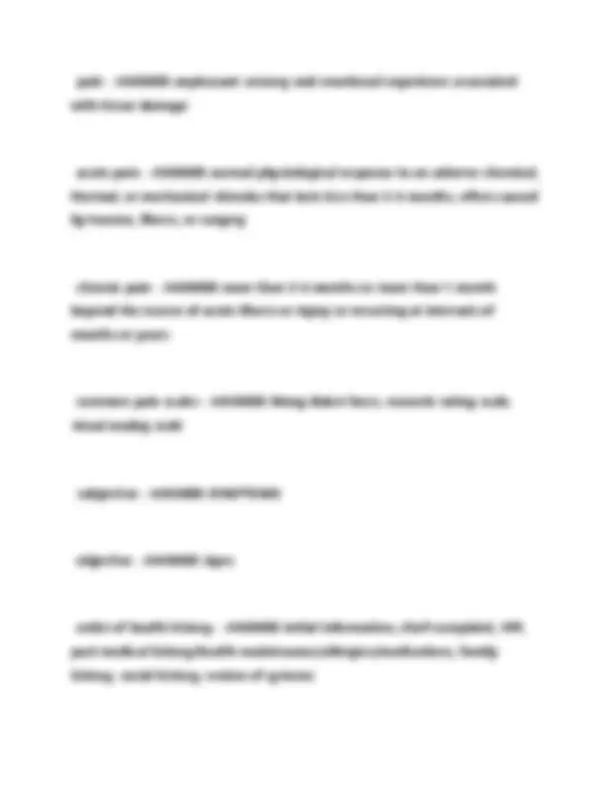
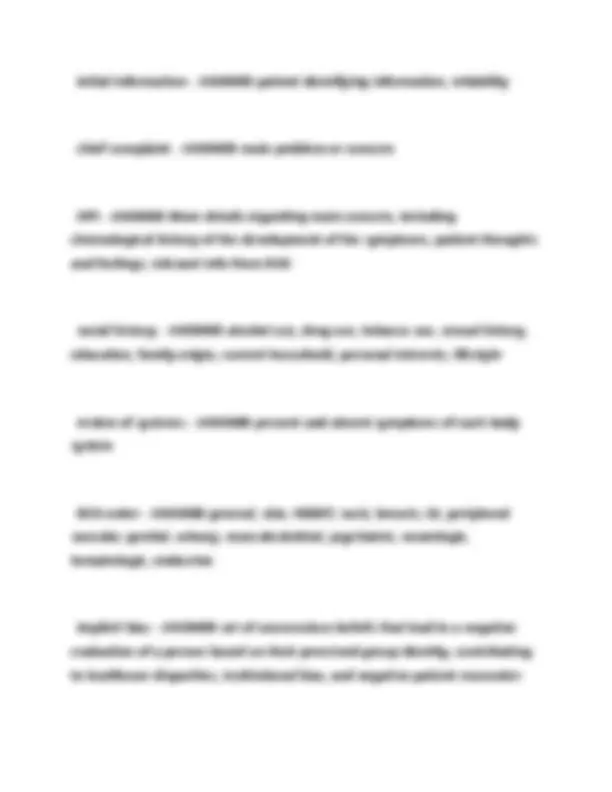
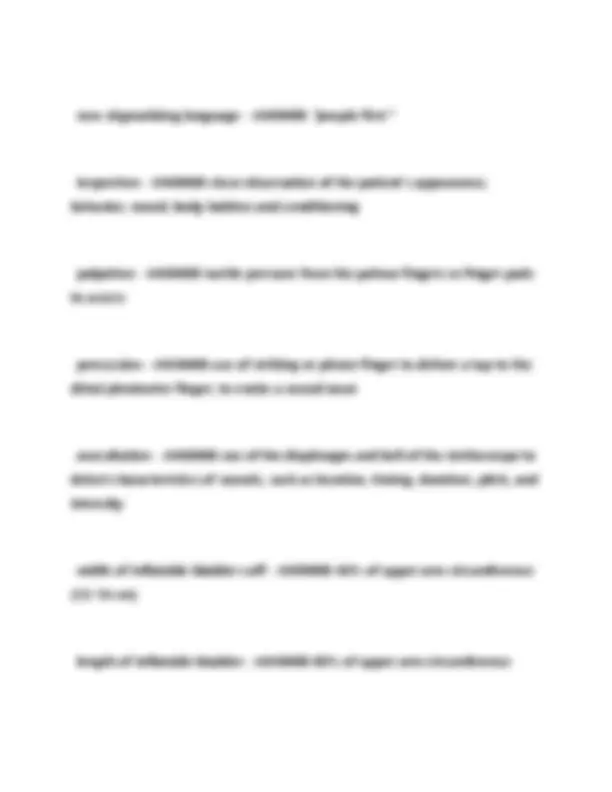



Study with the several resources on Docsity

Earn points by helping other students or get them with a premium plan


Prepare for your exams
Study with the several resources on Docsity

Earn points to download
Earn points by helping other students or get them with a premium plan
Community
Ask the community for help and clear up your study doubts
Discover the best universities in your country according to Docsity users
Free resources
Download our free guides on studying techniques, anxiety management strategies, and thesis advice from Docsity tutors
A comprehensive overview of essential medical interviewing techniques and clinical reasoning skills. It covers key aspects of building rapport with patients, understanding cultural humility, recognizing cognitive errors, and applying the principles of medical ethics. The document also delves into the importance of social determinants of health and the role of clinical reasoning in developing effective diagnosis and treatment plans.
Typology: Exams
1 / 9

This page cannot be seen from the preview
Don't miss anything!






best environment conditions - ANSWER well-lit, moderately warm, minimal background noise, comfortable, private, face at eye level, speak in low tones, do not sit between patient and bright light or window
build rapport - ANSWER introduce yourself first and last name, explain your role, shake hand, ask preferred name and pronouns, avoid first names without permission, apologize if you make a mistake
rapport with newborns - ANSWER congratulate, encourage feeding beforehand, calm voice, encourage holding
rapport with young children - ANSWER utilize play, introduce yourself to the patient first, brush up on kid culture
rapport with adolescents - ANSWER direct questions to the patient, ensure family feels heard, acknowledge confidentiality
rapport with older adults - ANSWER allow ample time, make a clear walking
path, environmental considerations, include family when indicated
cultural humility - ANSWER continually engaging in self-reflection and self-critique as lifelong learner and reflective practitioner to mitigate bias, promote empathy, and aid in acknowledging and respecting different cultural identities
three dimensions of cultural humility - ANSWER self-awareness, respectful communication, collaborative partnership
self-awareness - ANSWER explore your own cultural identity, learn about your own biases and values
respectful communication - ANSWER work to eliminate assumptions about what is normal and learn from your patients, they are the experts on their own culture, remain respectful and open
collaborative partnership - ANSWER build your patient relationship and respect mutually acceptable plans
types of cognitive errors - ANSWER anchoring bias, availability heuristic, confirmation bias, diagnostic momentum, framing effect, representation error, visceral bias
pain - ANSWER unpleasant sensory and emotional experience associated with tissue damage
acute pain - ANSWER normal physiological response to an adverse chemical, thermal, or mechanical stimulus that lasts less than 3-6 months, often caused by trauma, illness, or surgery
chronic pain - ANSWER more than 3-6 months or more than 1 month beyond the course of acute illness or injury or recurring at intervals of months or years
common pain scales - ANSWER Wong-Baker faces, numeric rating scale, visual analog scale
subjective - ANSWER SYMPTOMS
objective - ANSWER signs
order of health history - ANSWER initial information, chief complaint, HPI, past medical history/health maintenance/allergies/medications, family history, social history, review of systems
initial information - ANSWER patient identifying information, reliability
chief complaint - ANSWER main problem or concern
HPI - ANSWER More details regarding main concern, including chronological history of the development of the symptoms, patient thoughts and feelings, relevant info from ROS
social history - ANSWER alcohol use, drug use, tobacco use, sexual history, education, family origin, current household, personal interests, lifestyle
review of systems - ANSWER present and absent symptoms of each body system
ROS order - ANSWER general, skin, HEENT, neck, breasts, GI, peripheral vascular, genital, urinary, musculoskeletal, psychiatric, neurologic, hematologic, endocrine
implicit bias - ANSWER set of unconscious beliefs that lead to a negative evaluation of a person based on their perceived group identity, contributing to healthcare disparities, institutional bias, and negative patient encounter
economic stability - ANSWER housing, employment, poverty, food insecurity
social and community context - ANSWER civic participation, discrimnation, incarceration, social cohesion
neighborhood and built environment - ANSWER access to healthy food, crime and violence, environment, housing
core values of medical ethics - ANSWER nomalefience, beneficence, respect for autonomy, decisional capacity, confidentiality, informed consent, truth telling, justice
decisional capacity - ANSWER ability to make a decision that a clinician should respect
informed consent - ANSWER principle that clinicians must elicit patient voluntary and informed permission to test or treat them. the responsibility to inform the patient of diagnosis, prognosis, and treatment options
stigmatizing language - ANSWER language that may be perceived as dehumanizing, perpetuate stigma, and marginalizes rather than supports the patient
non-stigmatizing language - ANSWER "people first"
inspection - ANSWER close observation of the patient's appearance, behavior, mood, body habitus and conditioning
palpation - ANSWER tactile pressure from the palmar fingers or finger pads to assess
percussion - ANSWER use of striking or plexor finger to deliver a tap to the distal pleximeter finger, to evoke a sound wave
auscultation - ANSWER use of the diaphragm and bell of the stethoscope to detect characteristics of sounds, such as location, timing, duration, pitch, and intensity
width of inflatable bladder cuff - ANSWER 40% of upper arm circumference (12-14 cm)
length of inflatable bladder - ANSWER 80% of upper arm circumference